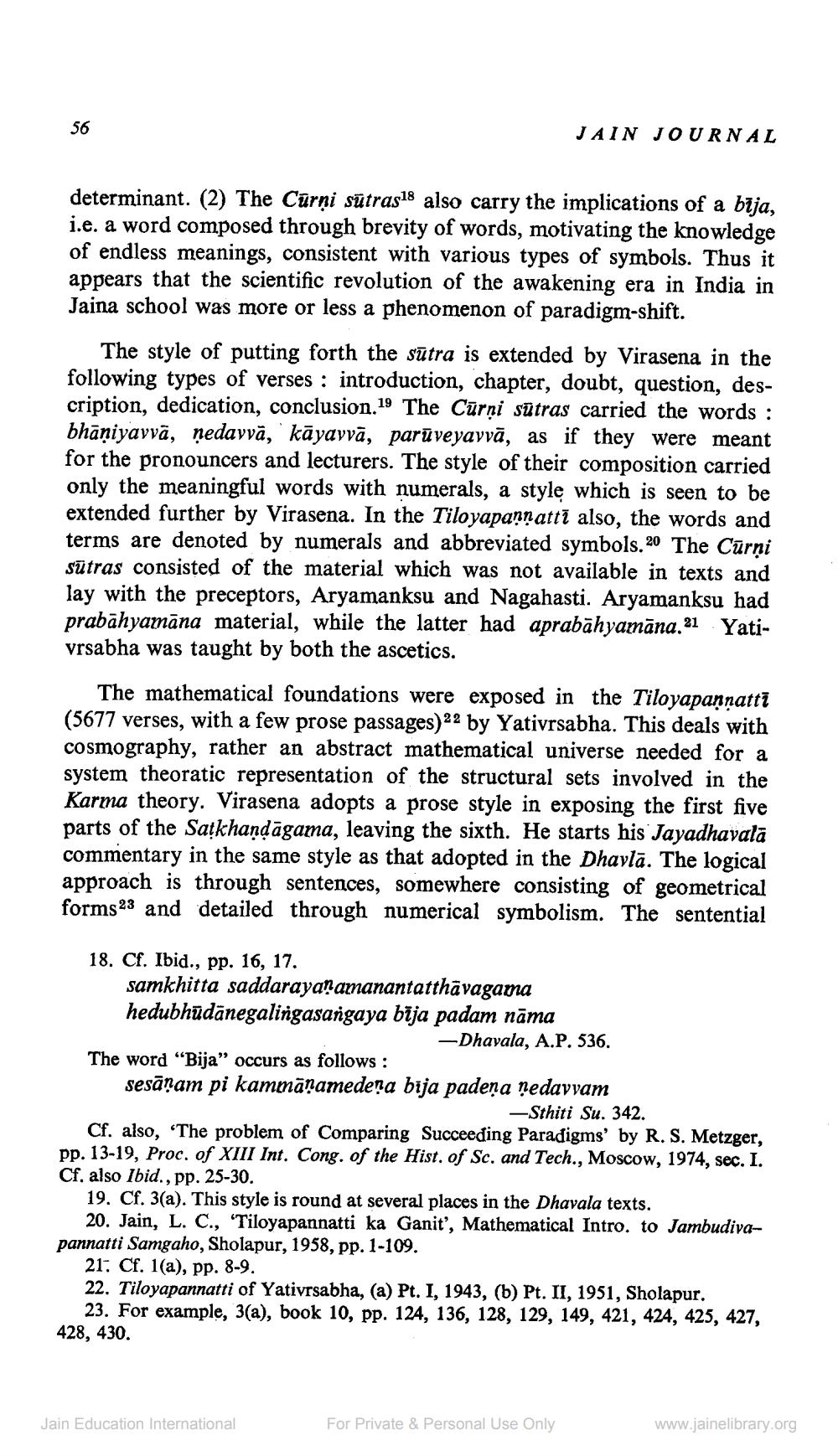________________
56
determinant. (2) The Curṇi sutras18 also carry the implications of a bija, i.e. a word composed through brevity of words, motivating the knowledge of endless meanings, consistent with various types of symbols. Thus it appears that the scientific revolution of the awakening era in India in Jaina school was more or less a phenomenon of paradigm-shift.
The style of putting forth the sutra is extended by Virasena in the following types of verses: introduction, chapter, doubt, question, description, dedication, conclusion.19 The Curṇi sutras carried the words : bhāniyavvä, nedavvā, kāyavvā, parūveyavvā, as if they were meant for the pronouncers and lecturers. The style of their composition carried only the meaningful words with numerals, a style which is seen to be extended further by Virasena. In the Tiloyapanṇatti also, the words and terms are denoted by numerals and abbreviated symbols. 20 The Curni sutras consisted of the material which was not available in texts and lay with the preceptors, Aryamanksu and Nagahasti. Aryamanksu had prabāhyamāna material, while the latter had aprabahyamāna.21 Yativrsabha was taught by both the ascetics.
JAIN JOURNAL
The mathematical foundations were exposed in the Tiloyapanṇatti (5677 verses, with a few prose passages) 22 by Yativrsabha. This deals with cosmography, rather an abstract mathematical universe needed for a system theoratic representation of the structural sets involved in the Karma theory. Virasena adopts a prose style in exposing the first five parts of the Saṭkhaṇḍāgama, leaving the sixth. He starts his Jayadhavala commentary in the same style as that adopted in the Dhavla. The logical approach is through sentences, somewhere consisting of geometrical forms 23 and detailed through numerical symbolism. The sentential
18. Cf. Ibid., pp. 16, 17.
samkhitta saddarayanamanantatthävagama hedubhūdānegalingasangaya bija padam nāma
-Dhavala, A.P. 536.
The word "Bija" occurs as follows:
sesāņam pi kammaṇamedeņa bija padeņa nedavvam
-Sthiti Su. 342.
Cf. also, 'The problem of Comparing Succeeding Paradigms' by R. S. Metzger, pp. 13-19, Proc. of XIII Int. Cong. of the Hist. of Sc. and Tech., Moscow, 1974, sec. I. Cf. also Ibid., pp. 25-30.
Jain Education International
19. Cf. 3(a). This style is round at several places in the Dhavala texts.
20. Jain, L. C., "Tiloyapannatti ka Ganit', Mathematical Intro. to Jambudivapannatti Samgaho, Sholapur, 1958, pp. 1-109.
21. Cf. 1(a), pp. 8-9.
22. Tiloyapannatti of Yativrsabha, (a) Pt. I, 1943, (b) Pt. II, 1951, Sholapur. 23. For example, 3(a), book 10, pp. 124, 136, 128, 129, 149, 421, 424, 425, 427, 428, 430.
For Private & Personal Use Only
www.jainelibrary.org




